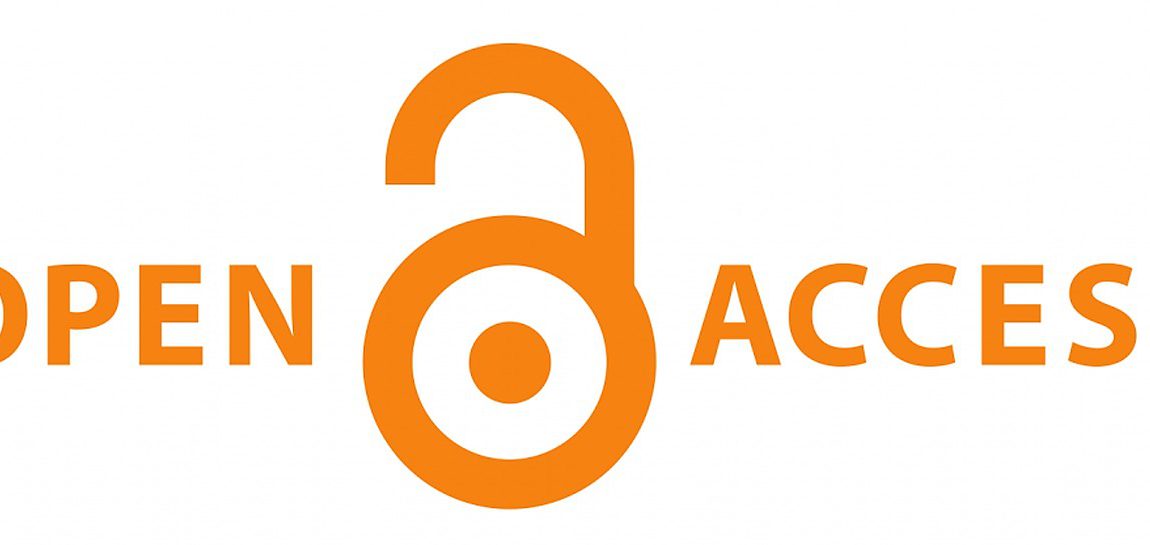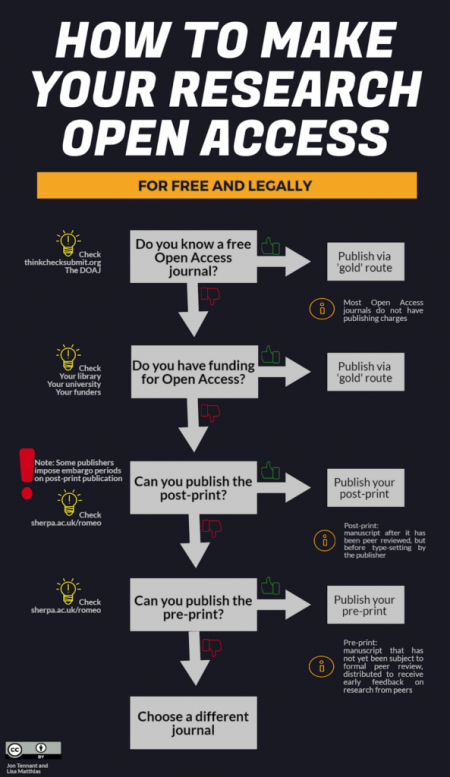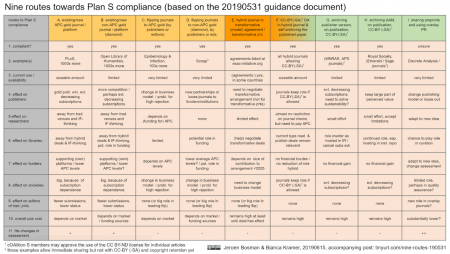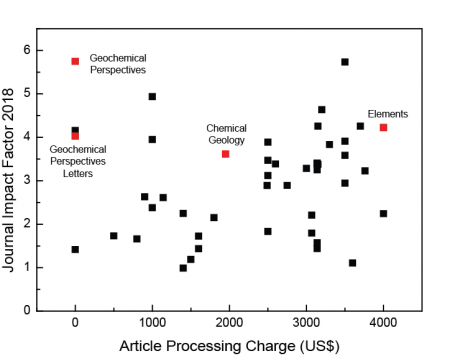
Open access and geochemistry, what’s the rule?
A long time ago, in a galaxy, far, far away when I was an undergraduate student (I guess it must have been around 2002), I first met the principles of Open Access (OA). A few years later (in 2006 or 2007), I deposited my PhD manuscript in the French repository HAL (a name chosen in memory of Stanley Kubrick’s film “2001: A Space Odyssey”!?) and started to use HAL as my repository for all of my articles: OA the GREEN way! Today, all of my publications are accessible there with OA. Unfortunately, too many colleagues still don’t pay much attention to OA, and a part of their work is not freely accessible, placed behind a paywall.
What do we mean by ‘Open Access’?

Since the late 1980s, members of the scholarly community have made various cases for wider public access to published research, known as OA. Scientific publishing is currently undergoing a major transformation, with the move to OA marking a major shift in the financial models of major publishers, opening up diversity in publishing paths, and raising the issue of publishing ethics. Ensuring that scientists and their universities do not have to pay more to read and write papers than they already do is critically important.
As we recall in these comments: OA too often gets conflated with just one way of achieving it: the author-facing business model of Article Processing Charges (APCs), whereby authors pay an APC to cover the cost of publishing. This infographic by Matthias and Tennant (2018) shows how to achieve 100 % OA for free and legally.
According to the Directory of Open Access Journals (DOAJ), about 71 % of full OA journals do not charge APCs (like Geochemical Perspective Letters, a journal of the European Association of Geochemistry); however, most of the articles published with OA have been published in APC journals. The highest APCs are often leveraged by the large commercial publishing houses, but those high APCs are not generally representative of the wider academic publishing environment in some other fields of research, such as geochemistry.
As with all other scientific disciplines, there is a strong imperative for the geochemistry community to ensure that the research it produces is widely accessible.
Open Access and Plan S: a changing world
Practices of open access are growing at a systemic level. The Plan S campaign, a funder-led initiative launched in September 2018, is aimed at accelerating the full transition to OA. Such interventions have opened up debates on the capacity of journals and academic societies to transition effectively and sustainably to a dominant OA model. Like other scientific disciplines, geochemistry now has a number of publishing options available to authors, managed by a variety of institutions, commercial publishers, and societies, creating a diverse publishing environment.
It is even more important that individual research groups have a better understanding of the academic publishing environment and the options available to researchers as part of this transformation. Many of the professional societies that are active in this area are currently evaluating their publishing strategies and models, and some are considering an increased role for OA publication in their journals.
While science publication continues to move from the conventional paywalled model to OA, it is likely that there will be growing difficulties facing individual researchers approaching the APC system, regardless of any possible waiver or discount systems in place.
Finally, in contrast, self-archiving peer-reviewed approved manuscripts (postprints), the green way, is an alternative to conventional journal publishing. In addition, the policy of making research available to the wider public in some countries has essentially led to the setting up of institutional archives for this purpose. The Green OA solution is cost-free for writers, and various outlets for preprints such as repositories and shared resources (e.g. EarthArXiv, Earth and Space Sciences Open Archive) are available to allow the green OA route to be followed. Unfortunately, the preprint model remains limited in geochemistry.
There are currently nine different routes through Plan S for authors to achieve compliance (Bosman and Kramer, 2019), only some of which require the author (or institute/funder) to pay – some routes are free. The funders behind Plan S will allocate additional funding to researchers to cover associated APC costs, and authors should not be exposed to an increased financial burden. Complementary information can be found in this article.
If authors are not funded by cOAlition S, they have nothing to worry about because they won’t be forced to follow a policy that doesn’t concern them. If anything, we should be concerned that, instead of the other potentially more viable and equitable methods of achieving OA, Plan S seems to be directly financially skewed towards covering APCs, based on current developments surrounding transformative agreements.
Part of Plan S also involves reforming the evaluation system, particularly by encouraging the wider adoption of the San Francisco Declaration On Research Assessment.


In our recent article, we provide a simple overview of the current trends in OA practice in the broad field of geochemistry. Approach characteristics, such as whether an APC exists or not, what embargo duration or self-archiving policy limitations are in effect, and whether or not preprint sharing is allowed, are detailed. You can download the data here. Most journals have self-archiving policies that enable authors to share their peer-reviewed work free of charge via green OA (use SHERPA/RoMEO to check for this).
There is no clear connection between the impact of the journal and the APC (see Figure). Generally, the journals with the highest APC are those of the major commercial publishers and not publishers from the geochemistry community itself. The increase in OA publication has potential impacts on researchers and appears to assign costs to individuals from organizations. It is possible that such high costs will continue to place financial inequities on the research community until the geochemistry community decides to move away from journal-based evaluation criteria. Geochemists, however, could more generally choose legal self-archiving as a fair and safe way to advance their research correspondence.
Take away message
Finally, it seems necessary to draw attention to the situation of hybrid journals, which include the majority of traditional historical journals in geochemistry, in the context of the rapid development of scientific publishing models. Plan S advocates endorsing media with full open access and therefore excludes hybrid journals. This officially discourages researchers and organizations from paying additional fees in subscription-based journals and tells us not to endorse a “double-dipping” model. It is indeed possible to publish an article in a hybrid journal without paying APCs and still disseminate the text on a server in an open archive. The article will only be accessible to subscribers on the journal’s website but will be available to everyone on the free archive (the green route).
“It’s your work. Publish where you want. But don’t lock it up.”
Erin McKiernan @emckiernan13
This blog post is based on my two articles on OA:
Pourret, O., Hursthouse, A., Irawan, D. E., Johannesson, K., Liu, H., Poujol, M., Tartèse R., van Hullebusch, E.D., Wiche O. (2019) Open Access publishing practice in Geochemistry: current state and look to the future. EarthArXiv Preprint: https://doi.org/10.31223/osf.io/uxcwk.
Pourret, O., Irawan, D.E., Tennant, J.P., Wien, C., Dorch, B.F. (2020) Comments on “Factors affecting global flow of scientific knowledge in environmental sciences” by Sonne et al. (2020). Science of the Total Environment, 136454.
About the author
Olivier Pourret received his PhD in Earth Sciences in 2006 from Université de Rennes 1 (France) and his habilitation in Earth Sciences in 2013 from Université Picardie Jules Verne (France). He is now associate professor of geochemistry and deputy director of the Agroecology and Hydrogeochemistry (AGHYLE) group at Institut Polytechnique UniLaSalle, Beauvais (France). His research interests include trace metal fractionation and particularly Rare Earth Elements and cobalt in low-temperature aqueous systems, from rock to water, soil and vegetation (i.e. the Critical Zone). He tweets @olivier_pourret and his ORCID is 0000-0001-6181-6079.

